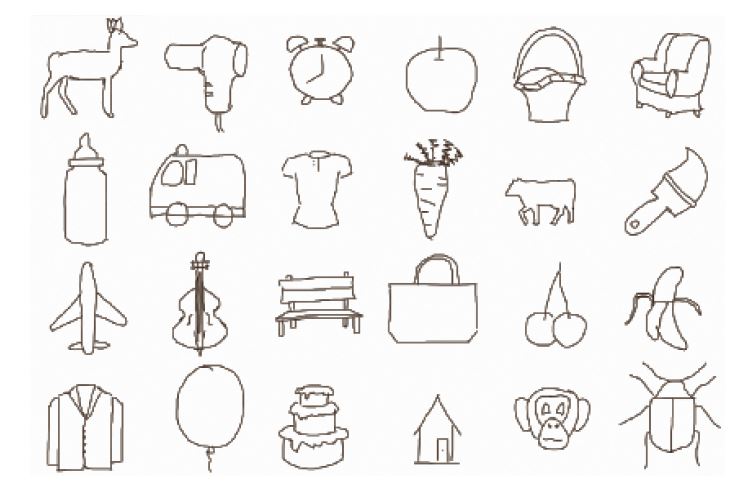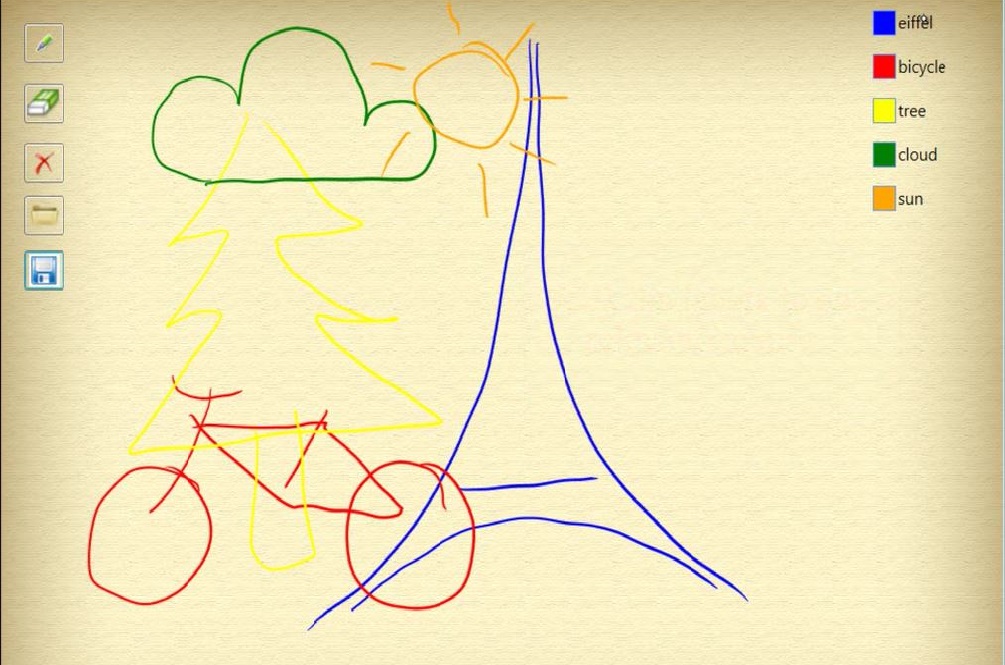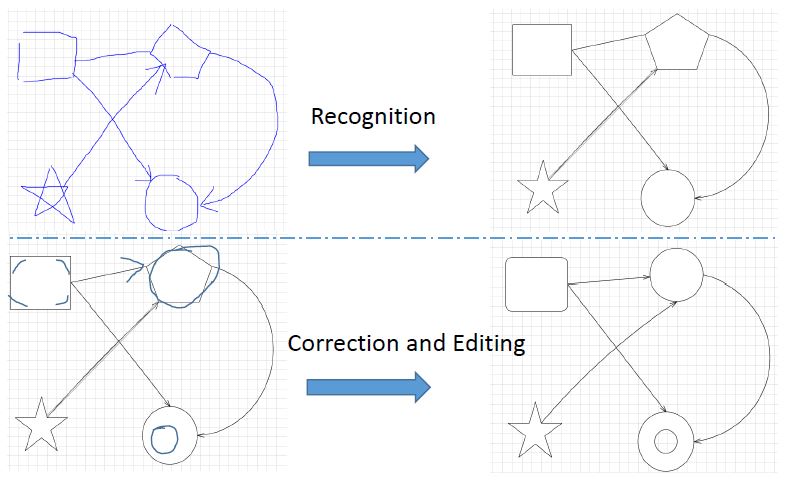We built the Sketch2Tag system for hand-drawn sketch recognition. Due to large variations presented in hand-drawn sketches, most of existing work was limited to a particular domain or limited pre-defined classes. Different from existing work, Sketch2Tag is a general sketch recognition system, towards recognizing any semantically meaningful object that a child can recognize. This system enables a user to draw a sketch on the query panel, and then provides real-time recognition results.
-

We built the Sketch2Tag system for hand-drawn sketch recognition. Due to large variations presented in hand-drawn sketches, most of existing work was limited to a particular domain or limited pre-defined classes. Different from existing work, Sketch2Tag is a general sketch recognition system, towards recognizing any semantically meaningful object that a child can recognize. This system enables a user to draw a sketch on the query panel, and then provides real-time recognition results.
-

We study the problem of how to segment a freehand sketch at the object level. By carefully considering the basic principles of human perceptual organization, a real-time solution is presented to automatically segment a user’s sketch during his/her drawing. First, a graph-based sketch segmentation algorithm is proposed to segment a cluttered sketch into multiple parts based on the factor of proximity. Then, to improve the ability of detecting semantically meaningful objects, a semantic-based approach is introduced to simulate the past experience in the perceptual system by leveraging a web-scale clipart database. Finally, other important factors learnt from past experience, such as similarity, symmetry, direction, and closure, are also taken into account to make the approach more robust and practical. The proposed sketch segmentation framework has ability to handle complex sketches with overlapped objects. Extensive experimental results show the effectiveness of the proposed framework and algorithms.
-

We systematically study how to incorporate users’ correction and editing into isolated and full sketch recognition. This is a natural and necessary interaction in real systems such as Visio where very similar shapes exist. First, a novel algorithm is proposed to mine the prior shape knowledge for three editing modes. Second, to differentiate visually similar shapes, a novel symbol recognition algorithm is introduced by leveraging the learnt shape knowledge. Then, a novel editing detection algorithm is proposed to facilitate symbol recognition. Furthermore, both of the symbol recognizer and the editing detector are systematically incorporated into the full sketch recognition. Finally, based on the proposed algorithms, a realtime sketch recognition system is built to recognize hand-drawn flowcharts and diagrams with flexible interactions. Extensive experiments show the effectiveness of the proposed algorithms.
